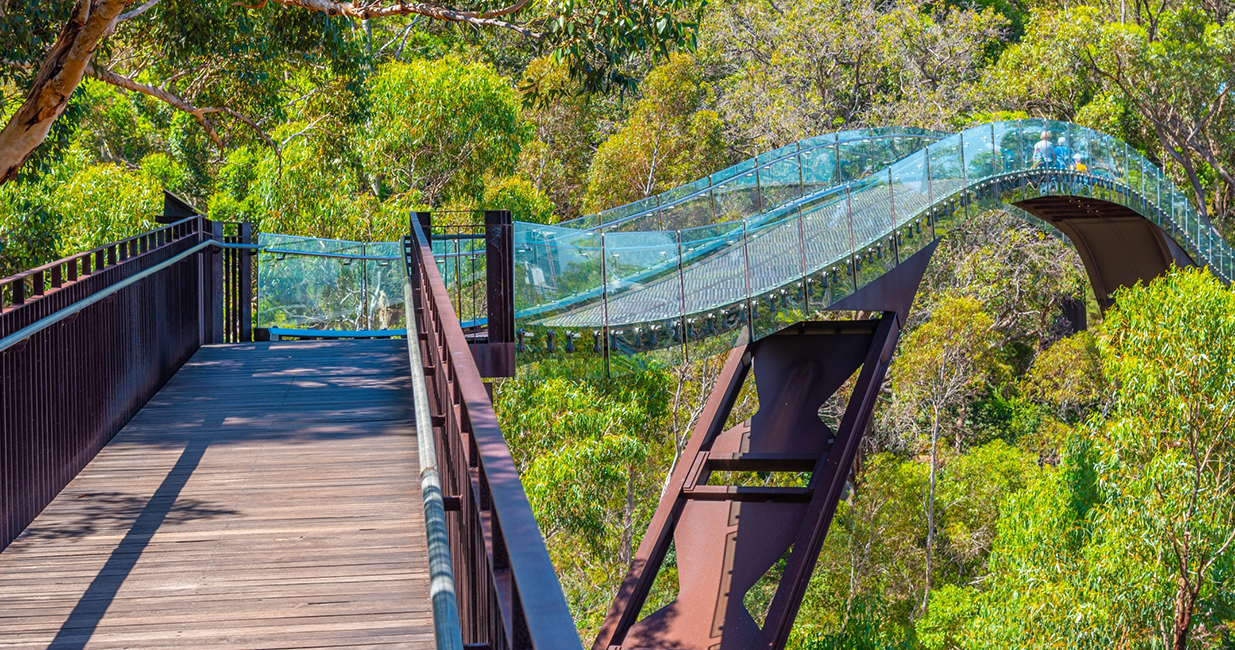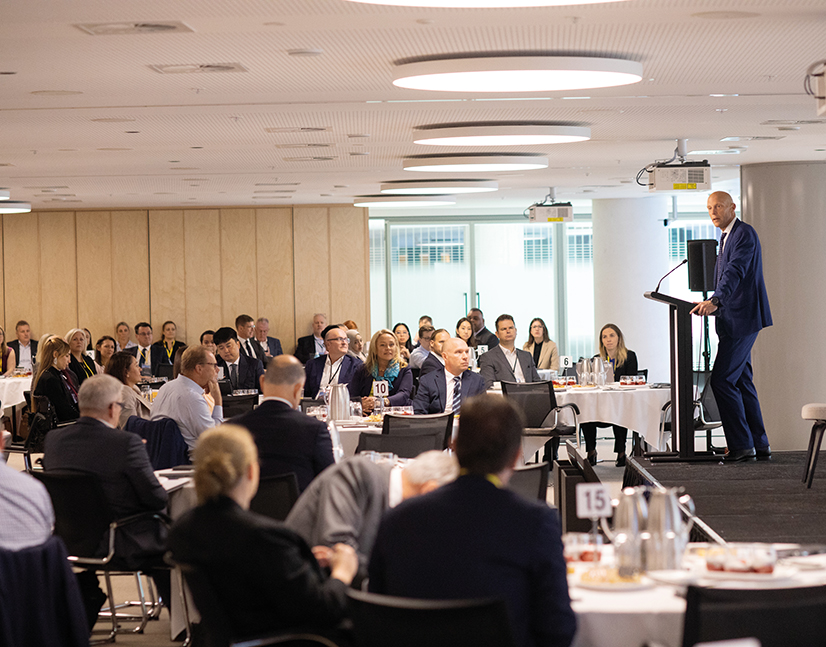
WA builds in sustainability and maintains focus on budget prudence
Western Australia has a different set of challenges from most of its Australian state peers. While its budget position is the envy of the group, the driver of its recent revenue bonanza – the resources sector – makes for a more difficult path to the low-carbon future. The state’s treasurer, Rita Saffioti, speaks to KangaNews about debt reduction and bond issuance, sustainability goals, migration and how it hopes to help alleviate the housing crisis.
Western Australia (WA) had a change of leadership – though not a change of government – in 2023. Budget responsibility has been a central plank of this government’s platform since it originally came to power in 2017. Will the transition mean any change in focus, especially given the strong state of WA’s finances?
Responsible management of our state’s finances has always been a priority of our government – it means we can invest in what matters to Western Australians and set up our state for the future. We remain committed to this, and growing our economy to maintain revenues, so we can continue funding essential services and supporting record infrastructure investment.
We will continue to make spending decisions through the Expenditure Review Committee (ERC), a process that has served us well since we came into office in 2017. There have been four consecutive years of declining net debt, and net debt is A$16 billion (US$10.3 billion) lower than projected under the previous Liberal-National government. Premier [Roger] Cook and I have been members of the ERC since its inception, so it makes sense for this approach to continue.
At the state budget, the government trumpeted debt reduction of nearly A$16 billion and the claimed consequent reduction of A$4.3 billion in interest payments since 2017. Is further debt reduction a goal? To what extent, if at all, does a desire to ensure Western Australian Treasury Corporation (WATC) remains visible and relevant in capital markets factor into the strategy?
Our government’s reduction in existing and planned debt has been a core pillar of our fiscal strategy that ensures we can prioritise funding of essential services, rather than excess interest repayments. We will continue to responsibly manage the state’s finances, including potential further debt reduction to reduce exposure to global volatility – such as recent interest rate increases and flow-on impacts from the war in Ukraine.
Although our new money programmes have been quite small compared with our peer issuers in recent years, refinancing requirements have provided opportunity to access markets in fixed- and floating-rate format. This will continue to be the case across the forward estimates period, with an average yearly term refinancing task of A$6 billion. A smaller programme presents challenges to regular issuance, but this should be viewed in the context of the state being in a very strong economic and fiscal position.
The launch of the WATC sustainability bond framework (SBF) and inaugural green bond have provided opportunity to engage with a more diversified global investor base, which together with regular investor updates helps keep WATC in the frame as an attractive investment option.
WATC hosted global investors as part of Commonwealth Bank of Australia’s Global Markets Conference in October. What takeaways do you hope investors left with?
We wanted participants to come out with a better understanding of the scale and breadth of activity going on in the state, the opportunities this presents for investment and trade, and the contribution it makes to Australia’s economic strength. In particular, our commitment to economic diversification and emerging industries such as renewable hydrogen, critical minerals and space technologies.
In addition, we were aiming for participants to take with them a clear understanding of the state’s commitment to improving ESG [environmental, social and governance] outcomes across the breadth of our community and economy.
WA is facing a housing supply crisis and devoted A$750 million in the May budget to boost housing and land supply. What will this deliver and how quickly? Is there a risk of timeline slippage given supply chain disruption and, especially, labour constraints?
The A$750 million of additional investment to boost housing supply and housing choice in the most recent budget extends our commitment to deliver 4,000 additional social houses by 2026/27.
We are aware that this is ambitious given the labour and supply challenges, but we are using all the tools and levers at our disposal to support this important expansion of dwellings for our most vulnerable, and to support housing supply more generally.
The housing supply challenge is complex and requires a multifaceted approach to drive activity. Our government is investing A$2.6 billion in housing and homelessness over the forward estimates. We are working across the spectrum to support a stable building and construction industry, and remove as many barriers to development as possible.
Recent initiatives include the head contractor relief scheme, new rise-and-fall provisions in government construction contracts, working in partnership with registered community housing providers to bolster the supply and diversity of social housing across WA, boosting low-fee training opportunities to attract new workers to the housing support industry, new procurement approaches to support the delivery of new and refurbished residential dwellings for social housing across the state, stamp duty concessions for off-the-plan properties in support of urban infill, and infill sewerage activity to unlock development of sites across Perth.
Speaking of labour, the WA government has been keen to promote inward migration to fill a gap in the employment market. How successful has this been? Has the bulk of migration been international or interstate?
Population growth is being supported by strong migration to our state since the re-opening of international borders, with population now expected to grow by 2 per cent or around 56,000 people in 2022/23. This is more than long-run average growth of 1.7 per cent.
The sharp recovery reflects the combined effect of strong inflows of overseas migration, primarily driven by a large influx of overseas students, and fewer temporary migrant departures. It also reflects a strong net inflow of interstate migrants to WA.
We are investing an additional A$2.4 million to attract skilled migrants to WA to assist with addressing the labour challenges, including a A$10,000 subsidy to overseas workers who migrate to WA and work in our construction industry. This includes expanding the “it’s like no other” global marketing campaign and providing migration advice via the London overseas Invest and Trade Office.
It was recently noted in the media that WA is the only state with no state-wide emissions reduction target for 2030 – the implication being that the state is a laggard in decarbonisation. Is this a fair claim? Does the lack of a 2030 target relate to WA’s unique reliance on the resources sector?
Our government has committed to reducing our own-source emissions by 80 per cent of 2020 levels by 2030, which is a very significant commitment given we have retained ownership of historically emissions-intensive infrastructure like electricity generation and distribution – which is in contrast to most other states in Australia.
We have shown leadership in committing to phase out state-owned coal-fired power generation by 2030. This is enabled by the large investment in infrastructure to increase renewable energy on the state’s main electricity grid, which is expected to exceed 80 per cent by 2030 and could reach 90 per cent by 2035.
We have also been working very closely with all facets of WA industry in developing sectoral emissions reduction strategies over the past two years – also in partnership with reputable science institutes such as ClimateWorks and the CSIRO [the Commonwealth Scientific and Industrial Research Organisation]. This is helping shape specific legislation, the Climate Change Bill, that will more formally establish the state’s long-term target of net zero emissions by 2050 and facilitate the development of policies to reduce emissions and enhance climate resilience.
Our resources sector is also well placed to aid decarbonisation initiatives across the globe through being the world’s leading supplier of lithium and other significant minerals critical to decarbonisation industries.
“Large mining companies in WA have strong internal incentives to transition and see significant business opportunities in doing so. They are facing similar pressures as government from their financiers and other stakeholders to demonstrate their progress, not just on carbon transition but for improving the ESG outcomes of their businesses across the board.”
The budget flags A$3 billion of investment committed to decarbonising electricity production. What is the plan to execute this and what kinds of targets are in place? In what other areas is the state government directing spending toward climate change mitigation and adaptation?
The A$3 billion announced in the 2023/24 state budget is directly connected to our commitment to decarbonise WA’s electricity grid through investment in large battery storage systems and new wind farms.
These significant investments form a major component of the project pool underpinning the state’s inaugural green bond, issued in June this year. Importantly, the largest of the battery systems will be assembled in the town of Collie – it forms an important part of our transition for the town’s economy and workforce given it is currently the location of our state-owned coal-fired power stations.
Our government has long been proactive in water supply management, through significant technology-based investments to diversify supply through desalination and advanced water recycling. There are also ongoing community education programmes that have seen significant reduction in per capita usage.
Noting the intensive energy requirements of desalination in particular, we have committed to our next desalination plant – an investment that also forms part of the green-bond project pool – being powered by renewable energy.
We are extremely conscious of the need to respond to climate change impact, which is reflected in the recent Climate Resilient WA: Directions for the State’s Climate Adaptation publication. Key initiatives identified in this document received significant funding in the 2023/24 state budget.
How much influence does the state government have over the mining industry and how is the government using this influence to encourage and incentivise environmental transition?
It is important to understand that large mining companies in WA have strong internal incentives to transition and see significant business opportunities in doing so. They are facing similar pressures as government from their financiers and other stakeholders to demonstrate their progress, not just on carbon transition but for improving the ESG outcomes of their businesses across the board.
Companies are responding to these pressures by committing to net zero emissions by 2050 or earlier. Their large balance sheets provide the investment capacity to support the transition. They also have extensive experience in successfully implementing large-scale transition across their supply chains and investments.
Further, virtually all are covered under the federal government’s safeguard mechanism – which requires them to reduce emissions by 4.9 per cent per year. This provides a further incentive and ensures minimum progress standards will be met.
We acknowledge and encourage this from large businesses, and identify policy supports for the sector that will also assist mid-tier businesses with their transition journey. We are also providing incentives for industry innovation, and research and development. Examples of this include a range of grant programmes to assist business start-ups, such as through the Renewable Hydrogen Fund, Carbon Innovation Grants Program and Clean Energy Future Fund.
We are also partnering on significant R&D initiatives in other potential emerging areas of the mining industry that will contribute to global decarbonisation. These include green steel, integrated battery material processing and carbon capture and storage.
Does the state government remain committed to the WATC green-bond programme – especially in the context of what is expected to be a small funding task, especially for new money, over the coming years? What benefits has green-bond issuance brought to the state so far and how do you plan to expand its footprint and visibility?
The WATC SBF was developed to provide a vehicle for WATC to support financing expenditures on eligible projects and programmes, as outlined in the state’s ESG information pack, to assist in delivering on the WA government’s sustainability strategy.
One of the benefits of developing a sustainable finance programme is that it facilitates diversification of the WATC investor base, particularly to those investors that prioritise investments in ESG labelled bonds or green bonds. This was certainly the case in our inaugural green-bond issue, as seen by the volume of demand and breadth of investor participation.
The SBF and its associated issuance and reporting process also provides a direct mechanism for WATC to liaise with investors on the progress of the WA government in improving ESG outcomes for the state and to seek feedback as ESG disclosures evolve.
The scope of projects undertaken by our government lends itself to green, social or sustainability bonds over the medium term, ie the next five years. In addition to building the 2033 green bond, we will consider additional issuance in the labelled bond format in future years.

HIGH-GRADE ISSUERS YEARBOOK 2023
The ultimate guide to Australian and New Zealand government-sector borrowers.

WOMEN IN CAPITAL MARKETS Yearbook 2023
KangaNews's annual yearbook amplifying female voices in the Australian capital market.








